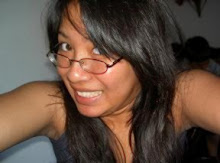The key to pronouncing Japanese are these rules:
a = 'ah' as in father
i = 'ee' as in knee
u = 'oo' as in rue
e = 'eh' as in get
o = 'oh' as in no
All the consonents are basically pronounced the same in English you just have to remember to keep the vowel sounds like the chart about.
Reading Japanese itself has four scripts. What I just wrote in quotation marks is romanized or phonetically written in the English alphabet for most people or especially foreigners to read. This is called Romaji.
The second script is called "Hiragana." This is one of the first scripts children in Japan learn how to read in write. There are about a hundred of them. Hiragana has soft looking characters and I think it is very beautiful to write. One distinction about Hiragana is that it used to write native Japanese words.
Romanji: Kore wa hiragana desu.
Hiragana: これ は ひらがな です。
The third script is called "Katakana." Japanese children learn this along side hiragana. Katakana is used to write foreign or borrowed words that are not native to the Japanese language like non-native Japanese people names and foreign products. More on that later... Katakana also looks more angular than hiragana. Katakana and hiragana together are refered to as "kana."
There is a chart for kana but you can google it to see what the alphabet looks like. I'm not sure how to explain it but the Japanese alphabet have a consonant and vowel that make one sound and letter.
a i u e o ka ki ku ke ko sa shi su se so etc...
あ い う え お か き く け こ さ し す せ そ etc...
ア イ ウ エ オ カ キ ク ケ コ サ シ ス セ ソ etc..
Romanji: Kore wa katakana desu.
Hiragana: これ は かたかな です。
Katakana: コレ ハ カタカナ デス。
The last and most diffcult part of reading Japanese is Kanji. The different between Chinese and Japanese characters is that in Chinese for one character there is a set and constant sound for a single kanji. The tones make each sound distinct. In Japanese a character has basically three kinds of readings and mulitple ways of pronouncing it that really depends on if it is combined or not.
Ex. Romanji: nihon, Hiragana: にほん, Katakana: ニホン, Kanji: 日本
Meaning: Japan
Japan imported Chinese characters in their own language back in the day but they also tried to make the sounds more Japanese in order to make them distinct. Writing Japanese is a combination of Kana and Kanji.
The first character for Japan is 日 and the meaning is basically sun or day.
This character has an originally modified Japanese-style Chinese reading called on-yomi (音読み.) This is usally written in katakana in dictionaries to emphasize the foriegn origin. The on yomi for this character is (nichi) or (jitsu.)
The native Japanese reading is called kun-yomi (.) In dictionaries these readings are written in hiragana. For this character the kun-yomi are (hi,) (-bi,) and (-ka.)
The third and most confusing reading is called nanori which is a special reading only used for names. I've seen kanji with more than ten different ways to read it for names. (a, aki, iru, ku, kusa, kou, tachi, ni-, nit-, nitsu, he... so...eleven other ways to read this kanji)
To be fluent you need to learn over 2,000 joyo kanji or education kanji. Japanese people learn kanji everyday from 1st to 6th grade through rote memorization. Over 20,000 kanji actually exist but with multiple readings and combinations...I'll stick to 2,000. I think I can read over 200...I'm not sure actually. I need to take a test later to figure out. Recognizing the meaning of kanji is easy but reading is quite difficult. It's a challenge I'm willing to take.
Romanji: Kore wa kanji desu
Hiragana: これ は かんじ です。
Katakana: コレ ハ カンジ デス。
Kanji: これ は 漢字 です。

2 comments:
That seems very hard compared to latin languages which I love you learn one you know them all. How long have you been studying?
I started to learn Japanese on and off since the 8th grade but I didn't actually take a Japanese class until my second year of college so...maybe 6 years? Since I learned in such a haphazard way I'm not sure what I really know. Right now in Japan, I'm actually learning how to learn a language. If that makes sense.
By way thanks for reading my Blog:) I also took Latin and the only thing I remember is how to sing 'Row row your boat' in Latin.
Post a Comment